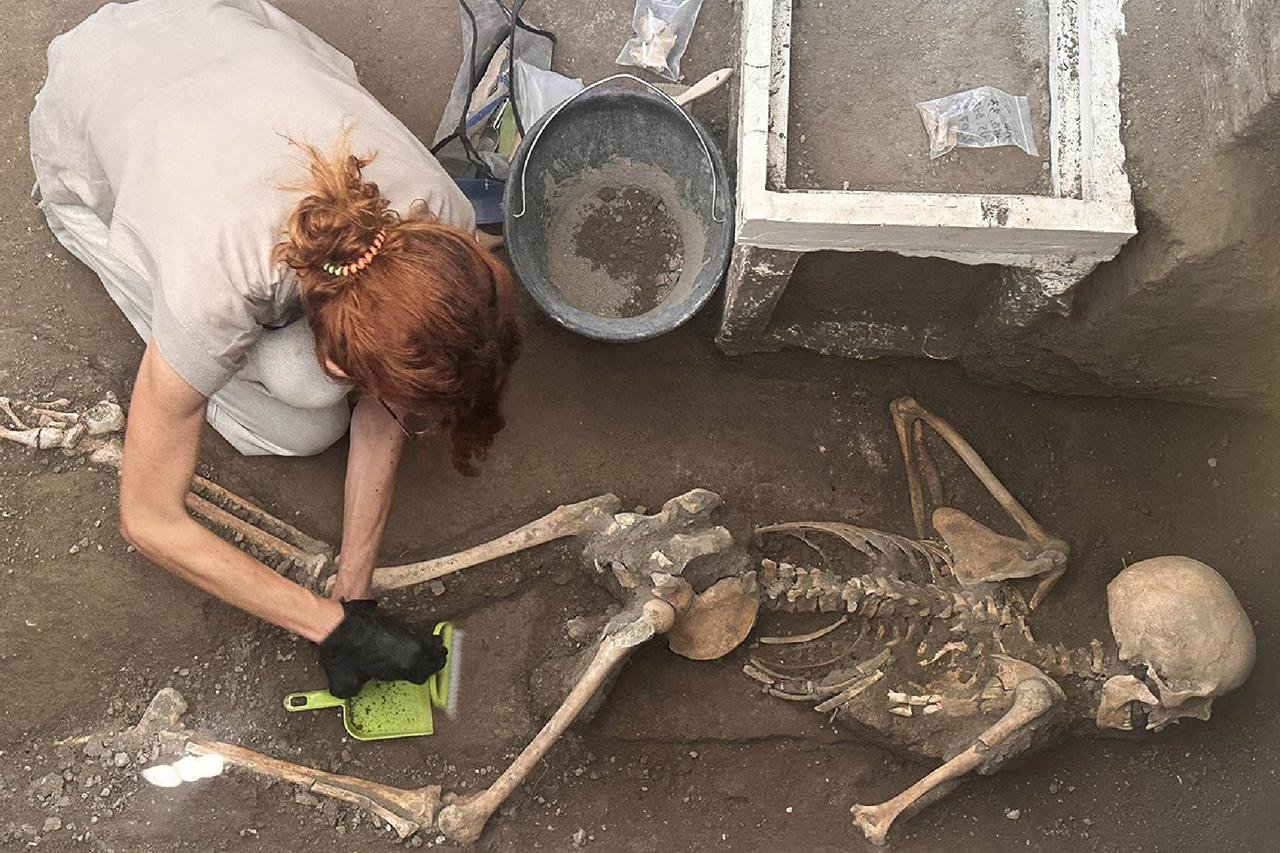Archaeological excavations in Pompeii continue to unveil the tragic history of the ancient Roman city, with the latest discovery revealing the skeletal remains of two victims—a man and a woman—who perished during the catastrophic eruption of Mount Vesuvius in 79 CE.

The skeletons were uncovered in a small, 2.8 by 3.5 meters (9-by-11.5-foot) room within a house located in the excavation area of Regio IX, Insula 10. The woman’s remains were found lying on what was once a bed, surrounded by a small treasure of gold, silver, and bronze coins, as well as jewelry, including gold and pearl earrings. A key was also discovered near her, suggesting that she might have been trying to retrieve valuables moments before her death.
The man, estimated to be between 15 and 20 years old, was found in another corner of the room, near what appears to be an exit. Tragically, he was crushed by the collapse of a wall, trapping him in a very tight space.

Experts believe that the two individuals took refuge in this small room, likely a bedroom, to escape the volcanic ash and rock fragments that rained down for hours during the eruption. The room was sealed off from the rest of the house, which helped protect it from the pumice stones that filled the adjacent grand salon. However, this same barrier prevented the victims from escaping when pyroclastic flows—hot volcanic gas, lava, and ash—ultimately overwhelmed them.

“Even after two millennia, we encounter the suffering and anguish of the people who perished, and it is our duty to address these with sensitivity and precision,” Gabriel Zuchtriegel, director of the Pompeii Archaeological Park, said in a translated video accompanying the publication. He also noted that it is not just an archaeological study but a way to comprehend the human suffering witnessed in Pompeii.
The discovery is part of a broader project aimed at securing and protecting the excavation fronts at Pompeii, which has become one of Italy’s most popular tourist attractions.

The archaeological team used meticulous microscale excavation techniques to recover the delicate skeletons and the objects found with them. By pouring plaster into the cavities left by decayed organic material, the researchers were able to reconstruct the room’s furniture, including the bed, a chest, a chandelier, and a table with a marble top, which still held glass, bronze, and ceramic utensils. These imprints in the volcanic deposits allowed the archaeologists to identify the original positions of the items at the time of the eruption.
Pompeii, once a bustling resort south of modern-day Naples, was home to an estimated 10,000 to 20,000 people when Mount Vesuvius erupted. Around 2,000 of them are believed to have died within 20 minutes of contact with the pyroclastic flows.
As research and restoration efforts continue, the Archaeological Park of Pompeii is also preparing for new projects outside the city walls, including excavations in the surrounding areas such as Civita Giuliana and ancient Oplontis in Torre Annunziata.
The findings were published in the E-Journal of Pompeii Excavations on August 12.























